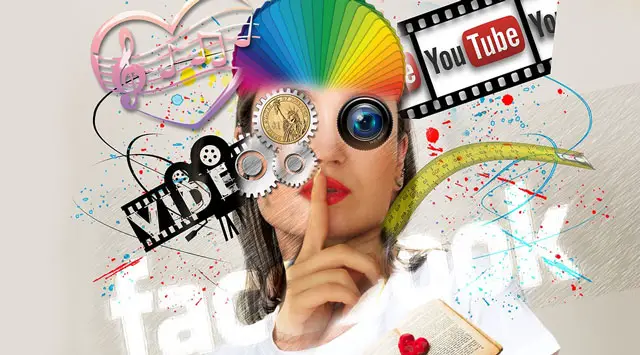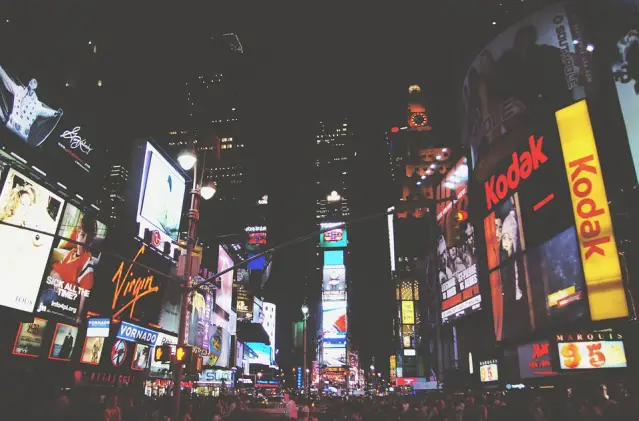
It doesn’t seem so long ago that advertising occurred through word of mouth, in newspapers, and on billboards only. Then came the radio and television with its new avenues of possibility. The dawning of the computer age has become a game-changer for almost every aspect of our lives, beginning with the internet and then with the success of social media that has transformed modern advertising.
As new platforms and opportunities have opened up for businesses, they can either resist or go with the tide. Those who fight change can become dinosaurs, while those who utilize it stand to gain greatly. Let’s take a look at how modern advertising has been changed by technology.
Shouting in a Crowd
Businesses now have the opportunity to feature on the internet and also on multiple social media platforms. In fact, the public are expecting this to be the case. A problem exists when markets become saturated. People are spammed with emails on a daily basis, and online banners and auto-play videos abound.
Brands struggle to get their voices heard or to stand out among the competition. According to the professionals behind Alfred London, PR companies need to look beyond simply promoting products. They need to think in terms of creating movements and changing public perception. When advertising a milk alternative, why not promote this as a responsible thing to do? Don’t just promote a sodastream, but major on the fact that it uses precycled materials.
Businesses are able to use sponsorship and influencers to help promote their products and services. They can also create accounts on review websites, and encourage their customers to contribute. This creates more advertising in return, and it can be highly effective. One survey said that over 60% of people check the reviews before they buy something. This is the new age of modern advertising!
A Changing Audience
One report says that during 2017, nearly 70% of Americans used at least one social media platform. This creates a vast potential customer base; in fact a global one.
When conducting ad campaigns using Facebook or Instagram, companies can narrow down their target audience. How about people aged 18-34 who live in two American states? It’s all possible now. Online data is accessible during the campaigns that helps businesses refine their targets even more. As such, niche marketing is a modern phenomenon where companies aim to reach very specific sets of people with a specific solution. Over time the reach may be widened, but it can be an effective marketing method.
Location and Potential
The geolocation function on social media helps companies learn where their potential customers are. When marketing is based on this data, the results can be highly effective.

Not even small social media platforms are without their uses. Adverts that feature here have the potential to become viral. TikTok has grown exponentially in recent times. Whilst it is designed for short video clips, its popularity is now gaining an interest from businesses who recognize the marketing potential.
Personalised Data
This is big business. We’ve probably all seen Amazon say that ‘people who liked – also liked this’. There is tremendous selling power in harnessing someone’s search history to offer them highly relevant products. It is possible for someone to search Youtube for a video on fishing, and then to see several more suggested. Adverts may also appear during Youtube videos that are based on the person’s personal interests. This is because Youtube was acquired by Google and it enabled the two to become connected.
Search Engine Optimization
Businesses can use the many avenues available (such as blogging, Youtube videos or social media content) to redirect potential customers to their sales pages.
If a business website contains the words someone is using when looking online, it may feature in response to their search. When this occurs, a business may experience higher online visibility than its rivals. This could apply even if the rival is bigger, better and has existed longer.
The Rise In Video Content
This has become more and more popular on every platform. A poll found that video adverts on Youtube are 1.4 times more likely to be seen and shared than normal posts containing text and pictures.
Many people are scrolling through social media on buses, trains or even at work. This has led to the increased popularity of silent running videos that have subtitles. Advertisers are starting to accommodate this preference.
Blogging used to be text and picture-based, but has now evolved to include video links. People can also do vlogging which is video-only material. Once again, this new channel offers marketing potential.
Whilst video content has escalated in popularity, it is interesting that print media and radio advertising is declining. In some cases, even television advertising has been impacted.
Automated Advertising
Email marketing is a highly effective channel. Once again, an email is more likely to be opened and seen when video content is promised in the title.
Modern technology has enabled some email marketing to be automated and based on each person’s individual preferences. One report said that a fifth of digital advertising is created by two machines connecting and interacting with this data.
Chatbots and AI
Chatbots were created to provide scripted answers to specific questions online. They are effective when they appear on business websites as they can operate day and night without the need for telephone staff. Interestingly, peoples’ profiles are now being fed into such technology. This means that the advice and responses will be more tailored for each individual.
AI stands for Artificial Intelligence. It can be used to conduct marketing tests in advance of campaign rollouts. This can help identify if there are any issues and tweaks needing to be made.
Voice Activated Software
Most people have heard of Siri, which appears on iPhones and can respond to verbal questions. Further voice activation technology has appeared in the form of Alexa and other similar devices. This has created another opportunity for advertising, particularly as its use is growing. Companies are increasingly targeting the users of such technology with their marketing.
As we can see, modern technology has transformed modern advertising. It presents new challenges that can also bring new opportunities. When marketing is done right, people can reap the benefits. No matter which platforms businesses use, however, advertising is ineffective if the goods or services are substandard.
The post How Technology Changed Modern Advertising appeared first on Mike Gingerich.
Read more: mikegingerich.com









